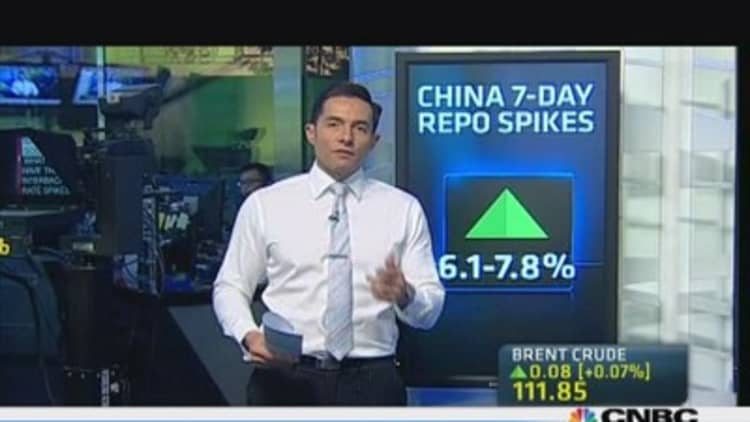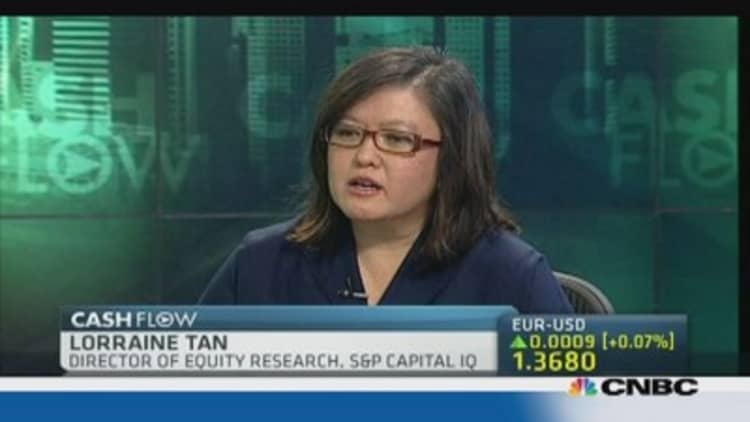
China's interbank borrowing costs spiked to a fresh six-month high on Monday despite an emergency cash injection by the central bank, still market watchers say there is no reason to panic.
The liquidity squeeze is largely driven by seasonal factors, analysts say, including a rush by lenders to shore up funds to meet regulatory requirements and a rise in corporate demand for cash.
"I think it's just a momentary thing...it's a seasonal issue, a rush for cash. Definitely the PBoC [People's Bank of China] needs to pump in more money which it has been doing, but a little bit more is probably necessary," Lorraine Tan, director of equity research at S&P Capital IQ told CNBC Asia's "Cash Flow."
(Read more: )
The seven-day repo rate, a key gauge of short-term liquidity in the banking system, touched 9.8 percent at one stage, up from 8.2 percent on Friday and the highest level since June 20 during the height of a cash crunch earlier this year.
This follows an announcement by the central bank on Friday that it had injected 300 billion yuan ($49.41 billion) via short-term liquidity operations (SLOs) from December 18 to 20. It also noted that excess cash reserves in the banking system - a key measure of liquidity - exceeded 1.5 trillion yuan, a high level by historical standards.
Equity investors appeared to shrug off the rise in interbank interest rates, with the ending up 0.2 percent in its first gain in 10 days.
Evan Lucas, market strategist at IG agrees the cash squeeze is a short-term issue owing to temporary factors.
(Read more: Marching higher once more: China cash rates)
In December, the government typically draws down its deposits from the central bank to disperse the funds to state-run entities with accounts at commercial banks, Lucas explained in a note. In response, the PBoC drains liquidity to offset the inflows.

"Therefore I think you are going to see the Chinese panda nesting for another few weeks as the government draws down on its fiscal store," he said, referring to the cash squeeze.
Goldman Sachs expects clearer communication by the PBoC will help relieve interbank market pressure.
"The revelation of strong SLO provision by the PBoC suggests the significant magnitude of the spikes was unlikely to have been intended by the policymakers," economists at Goldman Sachs wrote in a report over the weekend.
(Read more: China cash rates jump on liquidity worries)
"We also believe the PBoC will continue to employ SLO, regular OMO (open market operations), and/or stronger guidance about policy intention as needed to protect against any funding squeeze. We expect interbank interest rates to fall back into the more 'normal' trading range of 4-5 percent seen in recent months once the market friction and uncertainty subside," they added.
—By CNBC's Ansuya Harjani; Follow her on Twitter: @Ansuya_H


